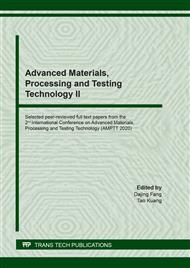p.3
p.9
p.14
p.20
p.27
p.32
p.40
p.46
Analysis of the Crack of 304 Stainless Steel and Improvement Measures
Abstract:
Stainless steel is more and more widely used in industry and life. 304 stainless steel has been widely used because of its lower price and better corrosion resistance. In this paper, according to the phenomenon of the crack of the adapter strip made of 304 stainless steel when used on the ship, the reason of the crack is analyzed from the aspects of design, technology and use, and the reasons of the crack are finally determined. In this paper, the mechanism of welding stress and chlorine embrittlement are analyzed and the corresponding improvement strategies are developed.
Info:
Periodical:
Pages:
9-13
Citation:
Online since:
January 2021
Authors:
Keywords:
Price:
Сopyright:
© 2021 Trans Tech Publications Ltd. All Rights Reserved
Share:
Citation:


